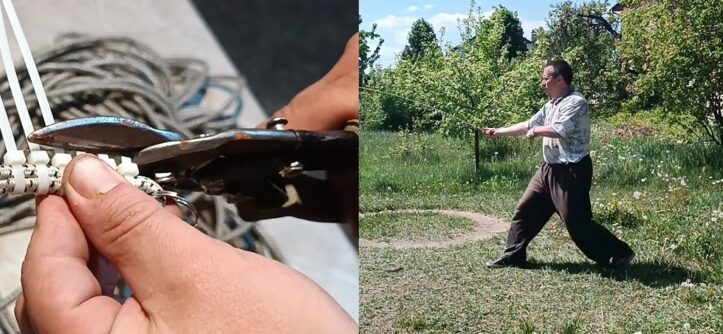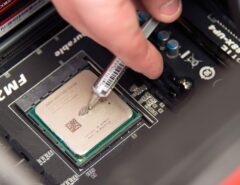The sheng biao stands as one of China’s most fascinating traditional weapons. This ancient rope dart has captivated martial artists for centuries. Modern practitioners and weapon enthusiasts, including those at Yifarope, continue to study and preserve this remarkable fighting tool. The weapon combines fluid movement with deadly precision, making it both beautiful and dangerous.
What is a Sheng Biao?
A sheng biao consists of a weighted dart attached to a long rope or cord. The dart typically measures three to six inches in length. Meanwhile, the rope extends anywhere from six to twenty feet. This unique design allows for both close-quarters combat and long-range attacks.
The weapon’s versatility sets it apart from other traditional Chinese weapons. Additionally, its compact size makes it easy to conceal and transport. However, mastering the sheng biao requires years of dedicated practice and training.
Historical Origins and Development
Ancient Chinese warriors first developed the sheng biao during the Han Dynasty. Historical records suggest its use in military campaigns and personal defense. Furthermore, traveling merchants and guards favored this weapon for its portability.
The weapon evolved throughout different dynasties. Therefore, various regional styles emerged across China. Each style emphasized different techniques and applications. Moreover, some regions developed specialized dart designs for specific purposes.
Construction and Materials
Traditional sheng biao construction requires careful attention to detail. The dart portion typically uses steel or iron for maximum effectiveness. However, modern versions may incorporate other metals or alloys.
The rope component originally used silk or hemp fibers. These natural materials provided durability and flexibility. Additionally, the rope’s thickness affects the weapon’s handling characteristics. Thinner ropes allow for faster movements, while thicker ones provide better grip.
Basic Techniques and Movements
Learning sheng biao techniques begins with fundamental movements. Students first master basic throwing patterns. These include vertical, horizontal, and circular motions. Furthermore, practitioners learn to control the rope’s length during combat.
The weapon offers numerous attack possibilities. Direct thrusting attacks target specific body parts. Additionally, whipping motions can strike from unexpected angles. However, defensive techniques are equally important for survival.
Training Methods and Progression
Proper sheng biao training follows a structured progression. Beginners start with stationary targets and simple movements. Therefore, safety remains the primary concern during early training. Students wear protective gear and practice in controlled environments.
Advanced training incorporates moving targets and complex combinations. Furthermore, practitioners learn to fight multiple opponents simultaneously. This requires exceptional coordination and timing skills.
Combat Applications
The sheng biao excels in various combat scenarios. Its reach advantage proves valuable against armed opponents. Additionally, the weapon’s flexibility allows attacks from multiple angles. However, close-quarters fighting requires different strategies and techniques.
Experienced users can entangle enemy weapons effectively. This creates opportunities for follow-up attacks or escapes. Moreover, the psychological impact of facing a rope dart often unsettles opponents.
Modern Practice and Preservation
Today’s martial artists continue practicing sheng biao techniques. Many schools incorporate rope dart training into their curricula. Furthermore, international competitions showcase traditional Chinese weapons skills.
Modern materials have improved weapon construction significantly. However, traditional techniques remain largely unchanged. Therefore, practitioners maintain connections to ancient martial traditions while benefiting from contemporary innovations.
Training Safety Considerations
Safety precautions are essential when training with rope darts. Beginners must use padded practice areas and protective equipment. Additionally, proper supervision prevents serious injuries during learning phases.
The weapon’s swinging nature creates unique hazards. Therefore, adequate space is crucial for safe practice. Furthermore, students should never train alone until achieving advanced proficiency levels.
Cultural Significance
The sheng biao holds deep cultural meaning in Chinese martial arts. It represents the harmony between hard and soft fighting principles. Additionally, the weapon symbolizes adaptability and resourcefulness in combat situations.
Many traditional stories feature heroes wielding rope darts. These tales inspire modern practitioners and preserve cultural heritage. Moreover, the weapon’s artistic movements contribute to Chinese performance arts.
Comparison with Other Weapons
The sheng biao differs significantly from conventional weapons. Unlike rigid swords or spears, it offers dynamic flexibility. However, this advantage comes with increased complexity in training and application.
Other flexible weapons exist in various martial traditions. Nevertheless, the Chinese rope dart maintains unique characteristics and techniques. Furthermore, its historical development follows distinct patterns compared to similar weapons.
Conclusion
The sheng biao represents a remarkable achievement in weapons design and martial arts development. This ancient Chinese rope dart combines practical combat effectiveness with artistic expression. Its unique construction allows for versatile applications in both offensive and defensive situations.
Modern practitioners continue preserving these traditional techniques while adapting to contemporary training methods. The weapon’s cultural significance extends beyond mere combat applications, representing important aspects of Chinese martial heritage. Therefore, studying the sheng biao provides valuable insights into ancient Chinese military traditions and fighting philosophies.
Whether pursued for historical interest, martial arts training, or cultural appreciation, the sheng biao offers rich opportunities for learning and growth. Its continued practice ensures that future generations will understand and appreciate this remarkable weapon’s contributions to martial arts history.
Read More Also: How to Stop Car Window from Breaking During Accidents
Frequently Asked Questions
How long does it take to master the sheng biao?
Mastering the sheng biao typically requires several years of dedicated practice. Basic proficiency may develop within six months to a year, but advanced techniques demand much longer training periods.
Is the sheng biao legal to own and practice with?
Legal restrictions vary by location and jurisdiction. Many areas classify rope darts as martial arts training equipment rather than prohibited weapons. However, always check local laws before purchasing or practicing.
What’s the ideal rope length for beginners?
Beginners should start with shorter ropes, typically 8-12 feet in length. This allows better control while learning basic techniques. Advanced practitioners often use longer ropes for increased range and complexity.
Can children safely learn sheng biao techniques?
Children can learn modified sheng biao techniques using padded practice versions. However, adult supervision and proper safety equipment are essential. Many schools introduce rope dart concepts through safer training tools first.
Where can I find qualified sheng biao instructors?
Traditional Chinese martial arts schools often include rope dart instruction. Additionally, some weapon specialists focus specifically on flexible weapons training. Online resources and workshops provide additional learning opportunities for dedicated students.






Leave a Reply